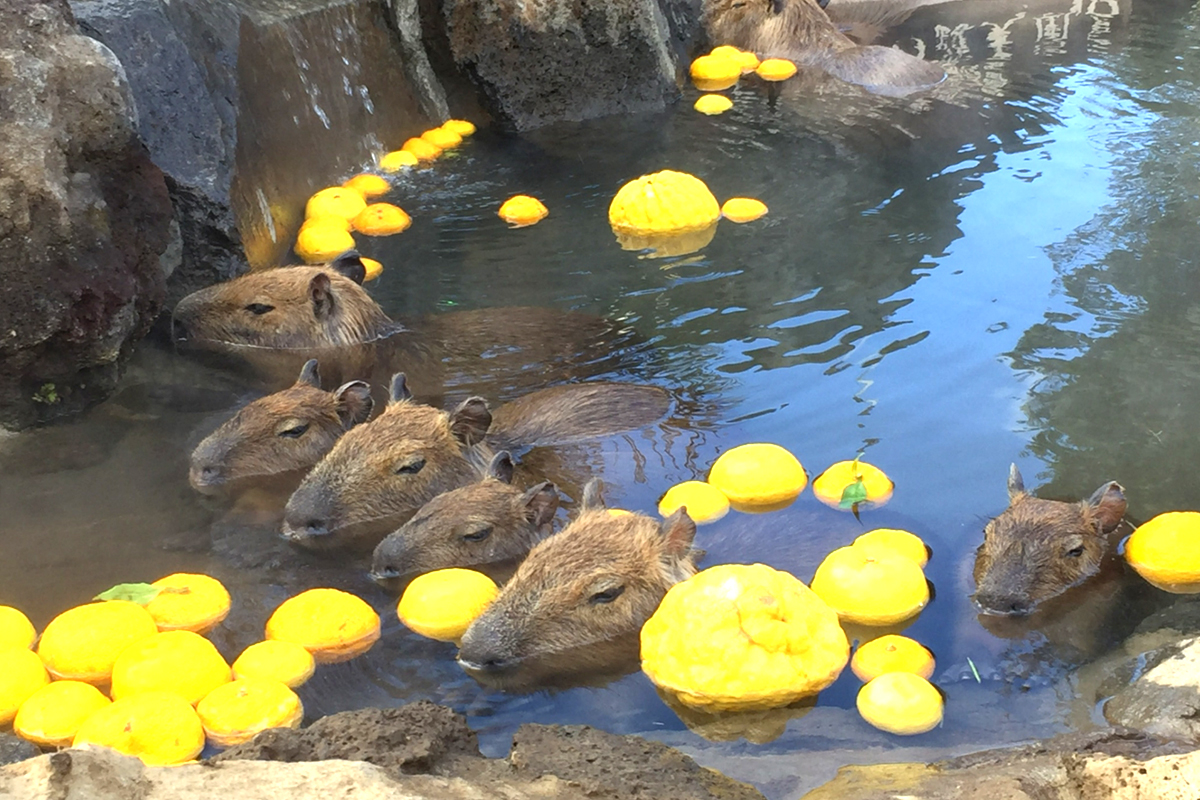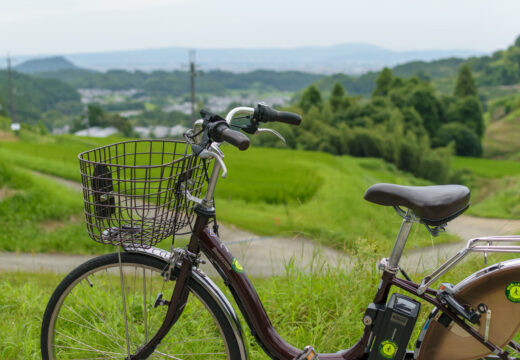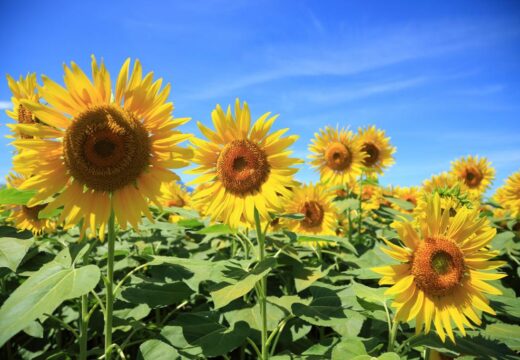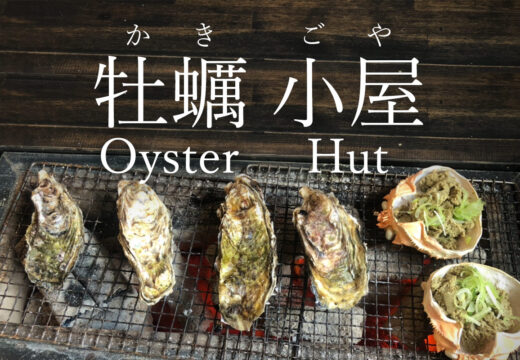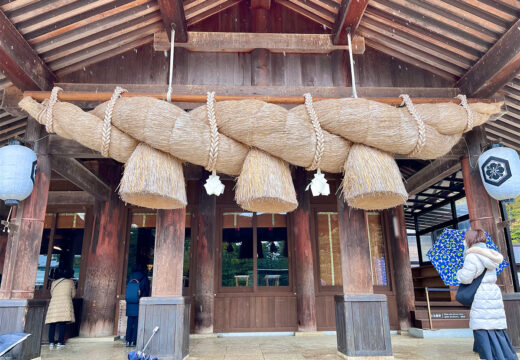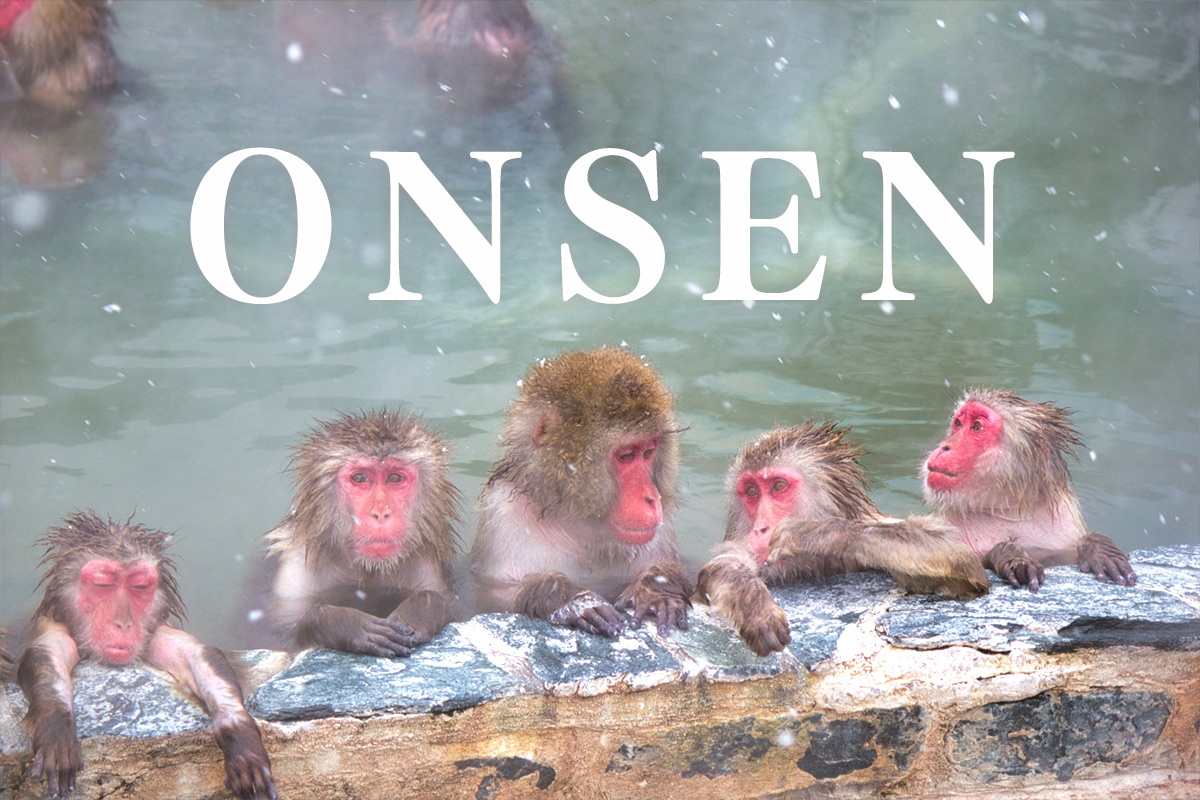
Japan shows a variety of landscapes in each season.
Hot spring resorts are also a popular winter tourist destination.
In fact, hot springs are also a popular spot for animals.
Today, we’ll introduce you to three sightseeing spots where you can see “animals in hot springs”!
1.The Hakodate Tropical Botanical Garden, where you can feed the adorable monkeys!
At the Hakodate City Tropical Botanical Garden in Hakodate, Hokkaido, you can see Japanese macaques bathing in hot springs only during the winter.

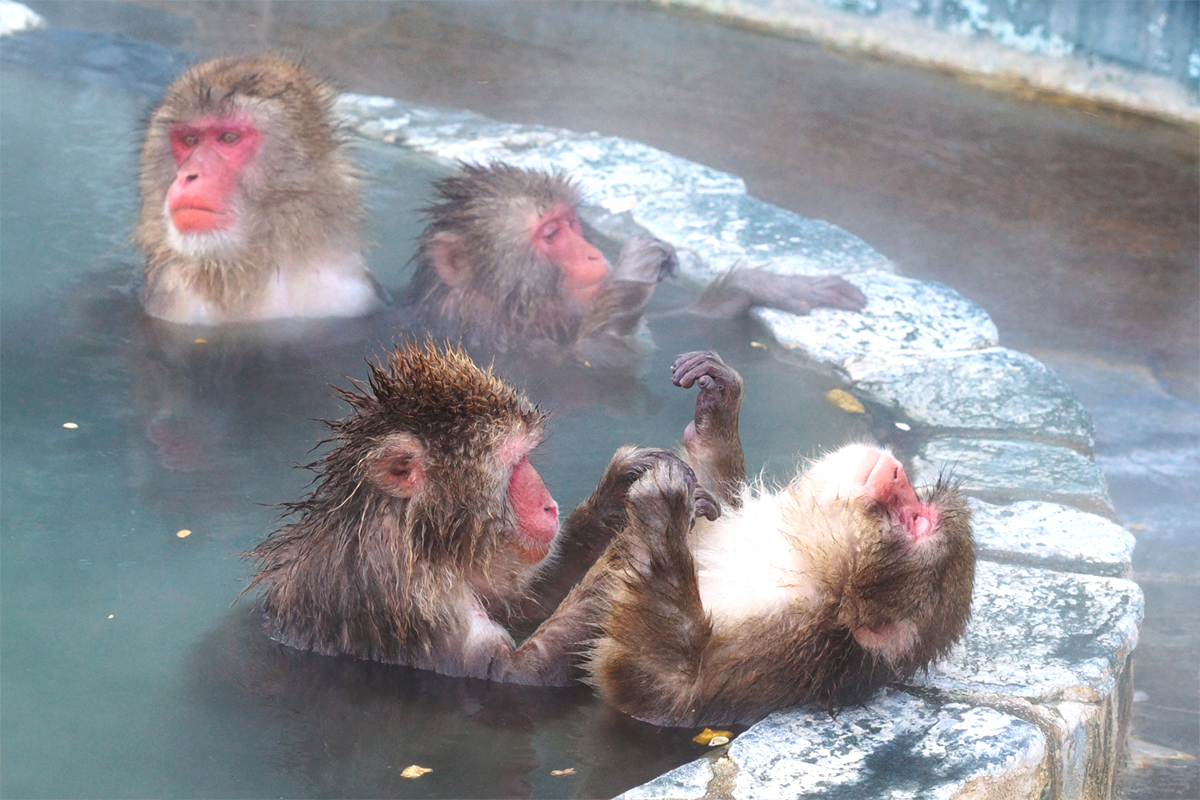
The loving expressions of Japanese monkeys as they relax in the hot springs. It’s soothing for us to watch!
Incidentally, Japanese monkeys also have their own personalities, and are divided into “bath lovers and bath haters.
Inside the park, you can buy food for the monkeys and feed them.
The monkeys have many personalities, and some of them even “beg” for attention.
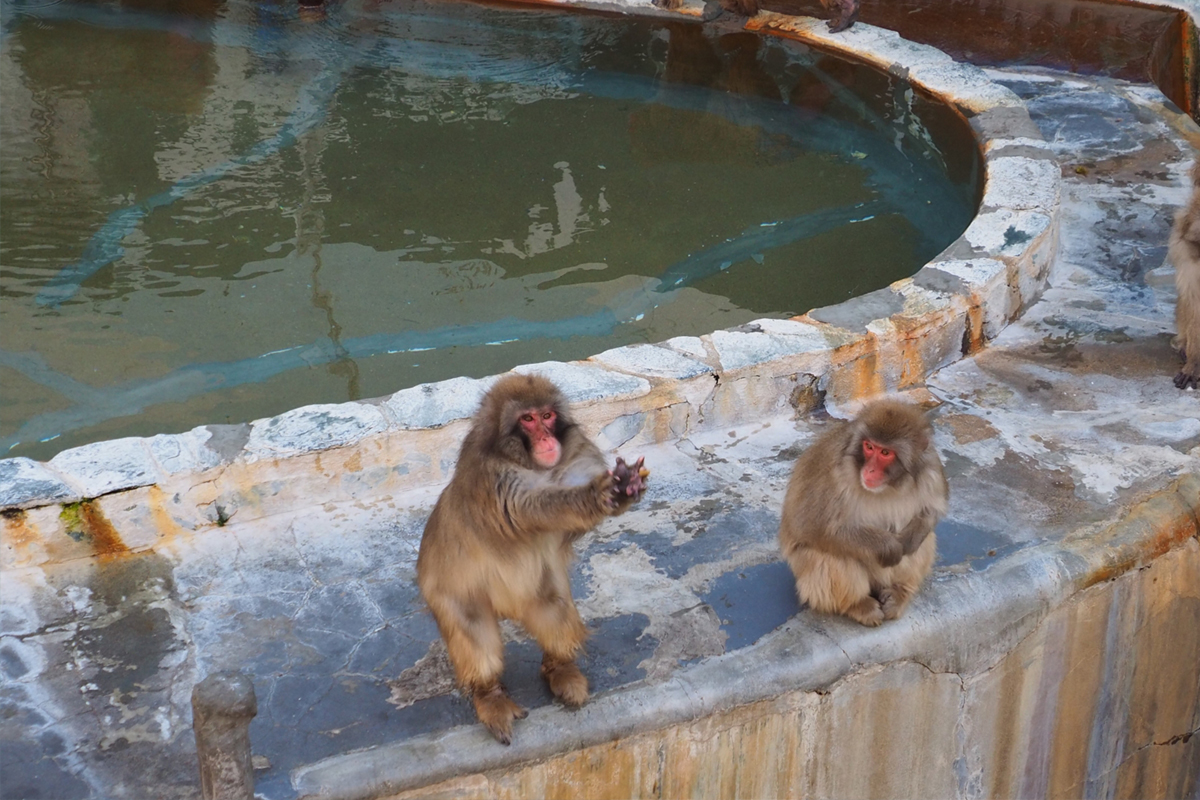
HAKODATE TROPICAL BOTANICAL GARDEN
2. The JIGOKUDANI YAEN-KOEN (wild snow monkey park) is a place where you can observe wild Japanese monkeys up close!
JIGOKUDANI YAEN-KOEN, located in the mountains of Nagano Prefecture, is an internationally famous spot where you can observe wild Japanese monkeys up close.
In the full-blown winter season, there is over 1 meter of snow and the minimum temperature can drop below -10 degrees Celsius.
The hot springs are available throughout the season, but most monkeys only bathe in the winter. It is generally believed that monkeys go to the hot springs to get away from the cold.

The Japanese macaques at the JIGOKUDANI YAEN-KOEN are world-famous for their nickname “snow monkeys”. They have even been featured in Time magazine and other news magazines around the world.
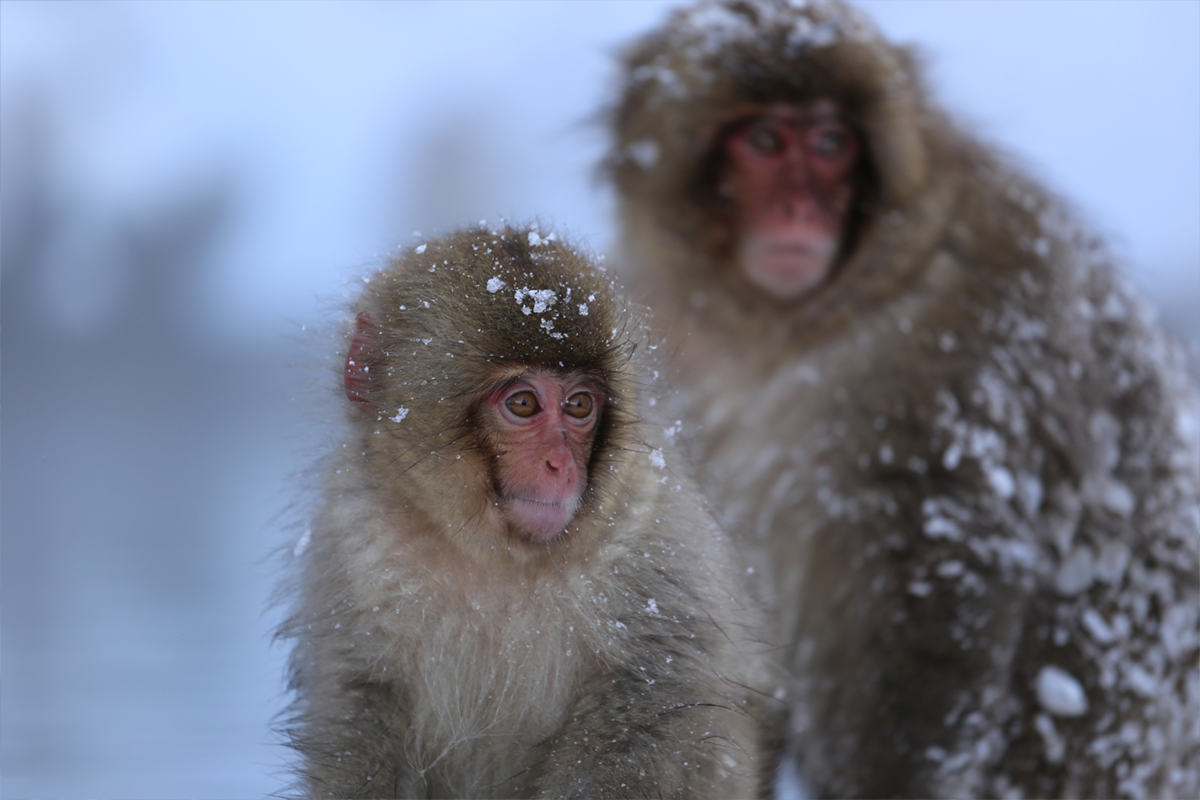
There are a few rules for visiting.
Do not touch the monkeys.
Watch from as far away as possible.
Don’t look monkeys in the eye, don’t be friendly, and don’t talk to them.
Do not use a selfie stick.
You can’t even feed them. You can’t even show them the food.
It is located in the mountains, far from the human settlements, and is very difficult to get to, but tourists from outside Japan are concentrated here, especially in the winter.
This is the only place in the world where you can observe the original movements, expressions and gestures of Japanese monkeys in the wild.
It’s a tourist spot that attracts not only tourists, but also photographers and researchers, and has a devoted following all over the world!
JIGOKUDANI YAEN-KOEN
3. Capybara taking a yuzu bath at “Izu Shaboten Park”
The capybara is the largest mouse on the planet. It lives in South America.
Capybara is originally from a hot country. doesn’t like the cold of winter.
At the Izu Shaboten Park in Shizuoka Prefecture, you can see adorable capybaras taking a bath every winter.
This is the 25th year that capybaras have taken a bath in the yuzu baths.
The reason why capybaras started taking baths dates back to 1982.
One day in winter, when the keeper was cleaning the exhibit with hot water, the capybaras gathered around. The capybaras seemed to feel comfortable with their limbs and buttocks in the hot water.
So the keeper prepared hot water in the pond, and the capybaras began to bathe happily.
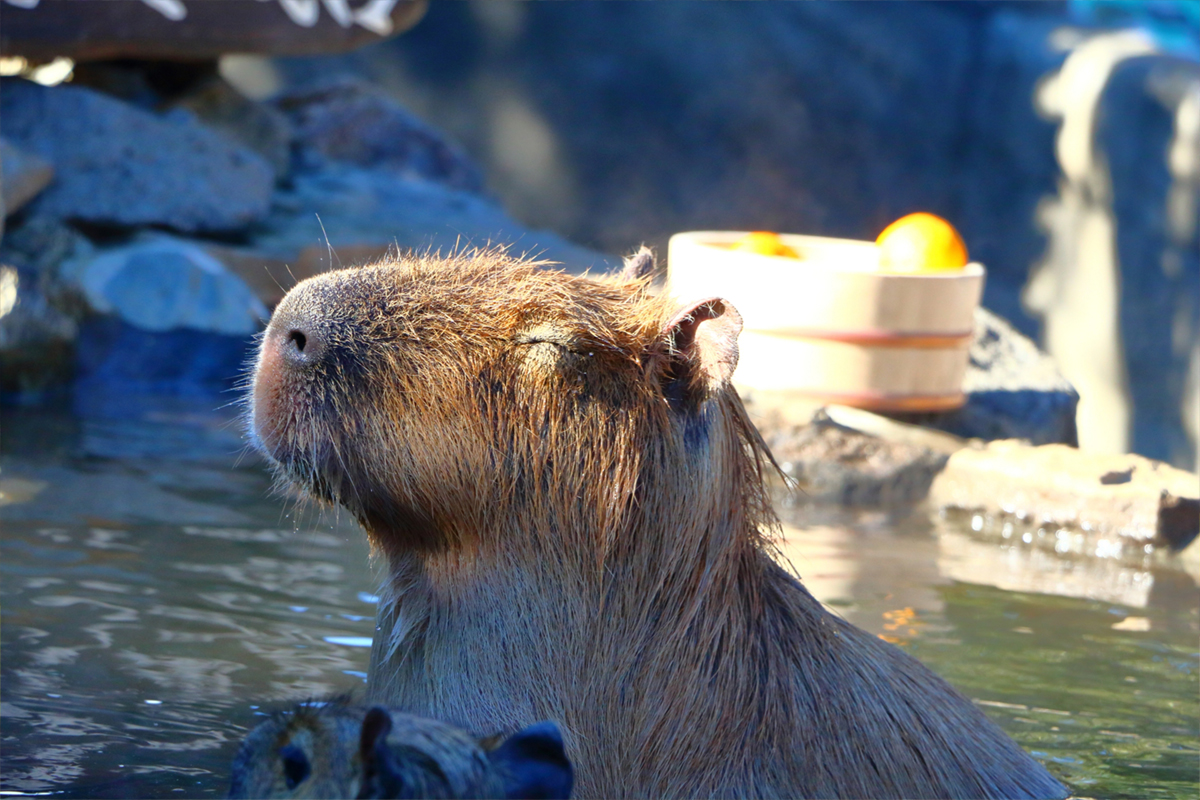
Incidentally, capybaras take surprisingly long baths. Once they take a bath, they stay in it for about an hour. Their dull eyes are so cute!
Izu Shaboten Park
Be sure to enjoy the sights of each season!
A humorous sight that can only be seen in winter. What did you think?
If you are planning to visit Japan during the winter season, please go and see the cute animals.
Click here for other articles related to hot springs.


